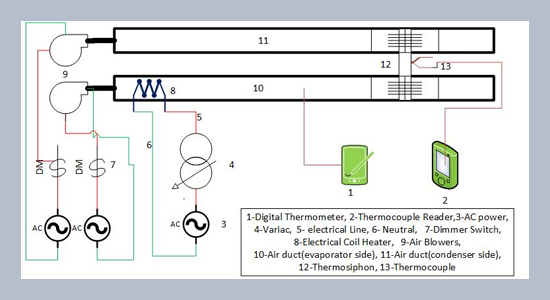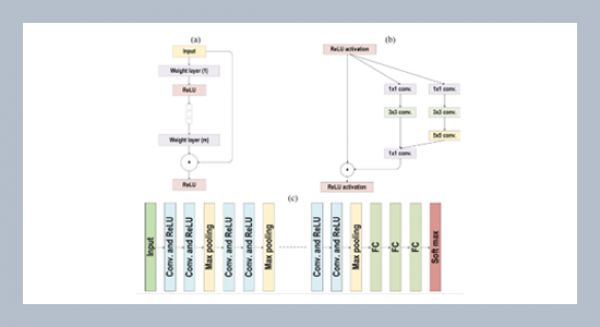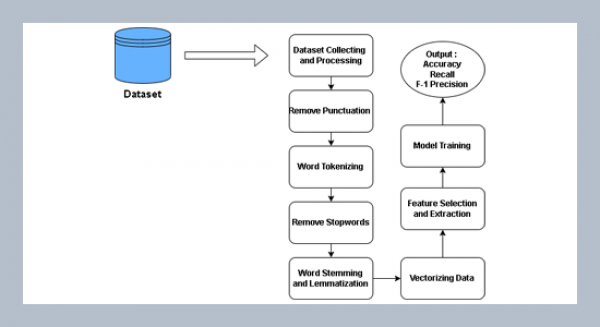REFERENCES
- Abdallah, A.S., Yasin, N.J., Ameen, H.A. 2022. Thermal performance enhancement of heat pipe heat exchanger in the air-conditioning system by using nanofluid. Frontiers in Heat and Mass Transfer, 18.
- Abreu, S.L., Colle, S. 2004. An experimental study of two-phase closed thermosyphons for compact solar domestic hot-water systems. Solar Energy, 76, 141–145.
- Alizadehdakhel, A., Rahimi, M., Alsairafi, A.A. 2010. CFD modeling of flow and heat transfer in a thermosyphon. International Communications in Heat and Mass Transfer, 37, 312–318.
- Bhatia, A. 2001. HVAC-How to size and design ducts. Continuing Education and Development, Inc., 877, 89.
- Çengel, Y.A. 2009. Heat exchangers. In Heat Transfer Engineering, 609–662.
- Chen, R.H., Su, G.H., Qiu, S.Z., Fukuda, K. 2010. Prediction of CHF in concentric-tube open thermosiphon using artificial neural network and genetic algorithm. Heat and Mass Transfer, 46, 345–353.
- Eidan, A.A., Najim, S.E., Jalil, J.M. 2016. Experimental and numerical investigation of thermosyphone performance in HVAC system applications. Heat and Mass Transfer, 52, 2879–2893.
- Guo, W., Nutter, D.W. 2009. An experimental study of axial conduction through a thermosyphon pipe wall. Applied Thermal Engineering, 29, 3536–3541.
- Haider, S.I., Joshi, Y.K., Nakayama, W. 2002. A natural circulation model of the closed loop, two-phase thermosyphon for electronics cooling. Journal of Heat Transfer, 124, 881–890.
- Hussein, H.M.S., El-Ghetany, H.H., Nada, S.A. 2006. Performance of wickless heat pipe flat plate solar collectors having different pipes cross sections geometries and filling ratios. Energy Conversion and Management, 47, 1539–1549.
- Jafari, D., Filippeschi, S., Franco, A., Di Marco, P. 2017. Unsteady experimental and numerical analysis of a two-phase closed thermosyphon at different filling ratios. Experimental Thermal and Fluid Science, 81, 164–174.
- Jia, R., Wang, Y., Shi, H., Xiong, J. 2014. Experimental and numerical study on the self-balancing heating performance of a thermosyphon during the process of oil production. Applied Thermal Engineering, 73, 1270–1278.
- Jouhara, H., Robinson, A.J. 2009. An experimental study of small-diameter wickless heat pipes operating in the temperature range 200°C to 450°C. Heat Transfer Engineering, 30, 1041–1048.
- Kim, Y., Kim, J.S., Shin, D.H., You, S.M., Lee, J. 2020. Enhanced thermal performance of a thermosyphon for waste heat recovery: Microporous coating at evaporator and hydrophobic coating at condenser. Applied Thermal Engineering, 175, 115332.
- Klein, S.A., Alvarado, F. 2013. Engineering equation solver software (EES). F-Chart Software: Madison, WI, USA.
- Kundu, B., Das, P.K. 2009. Performance and optimum design analysis of convective fin arrays attached to flat and curved primary surfaces. International Journal of Refrigeration, 32, 430–443.
- Liu, Y., Li, Z., Li, Y., Jiang, Y., Tang, D. 2019. Heat transfer and instability characteristics of a loop thermosyphon with wide range of filling ratios. Applied Thermal Engineering, 151, 262–271.
- Narcy, M., Lips, S., Sartre, V. 2018. Experimental investigation of a confined flat two-phase thermosyphon for electronics cooling. Experimental Thermal and Fluid Science, 96, 516–529.
- Naresh, Y., Balaji, C. 2017. Experimental investigations of heat transfer from an internally finned two phase closed thermosyphon. Applied Thermal Engineering, 112, 1658–1666.
- Noie, S.H. 2005. Heat transfer characteristics of a two-phase closed thermosyphon. Applied Thermal Engineering, 25, 495–506.
- Ochsner, K. 2008. Carbon dioxide heat pipe in conjunction with a ground source heat pump (GSHP). Applied Thermal Engineering, 28, 2077–2082.
- Ozsoy, A., Yildirim, R. 2016. Prevention of icing with ground source heat pipe: A theoretical analysis for Turkey’s climatic conditions. Cold Regions Science and Technology, 125, 65–71.
- Raad, O. 2019. The improvement of the solar air heater duct by wired ribs utilization. Karbala International Journal of Modern Science, 5, Article 6.
- Raghavendra, C.R., Hasavimath, K., Naik, K. 2021. Study on effectiveness of heat pipe heat exchanger with copper tube cylinders. Materials Today: Proceedings, 39, 800–804.
- Sabharwall, P., Gunnerson, F. 2009. Engineering design elements of a two-phase thermosyphon for the purpose of transferring NGNP thermal energy to a hydrogen plant. Nuclear Engineering and Design, 239, 2293–2301.
- Samba, A., Louahlia-Gualous, H., Le Masson, S., Nörterhäuser, D. 2013. Two-phase thermosyphon loop for cooling outdoor telecommunication equipments. Applied Thermal Engineering, 50, 1351–1360.
- Sarafraz, M.M., Tlili, I., Tian, Z., Bakouri, M., Safaei, M.R. 2019. Smart optimization of a thermosyphon heat pipe for an evacuated tube solar collector using response surface methodology (RSM). Physica A: Statistical Mechanics and Its Applications, 534, 122146.
- Seo, J., Bang, I.C., Lee, J.Y. 2016. Length effect on entrainment limit of large-L/D vertical heat pipe. International Journal of Heat and Mass Transfer, 97, 751–759.
- Sulaiman, M.W., Daraghmeh, H.M., Wang, C.C. 2020. Energy-saving potential of separated two-phase thermosiphon loops for data center cooling. Journal of Thermal Analysis and Calorimetry, 141, 245–265.
- Tong, Z., Liu, X. H., Li, Z., Jiang, Y. 2016. Experimental study on the effect of fill ratio on an R744 two-phase thermosyphon loop. Applied Thermal Engineering, 99, 302–312.
- Xu, Z., Zhang, Y., Li, B., Wang, C.C., Li, Y. 2018. The influences of the inclination angle and evaporator wettability on the heat performance of a thermosyphon by simulation and experiment. International Journal of Heat and Mass Transfer, 116, 675–684.
- Yang, X., Guo, J., Yang, B., Cheng, H., Wei, P., He, Y.L. 2020. Design of non-uniformly distributed annular fins for a shell-and-tube thermal energy storage unit. Applied Energy, 279, 115772.
- Wang, Y., Wang, X., Chen, H., Taylor, R.A., Zhu, Y. 2017. A combined CFD/visualized investigation of two-phase heat and mass transfer inside a horizontal loop thermosiphon. International Journal of Heat and Mass Transfer, 112, 607–619.















